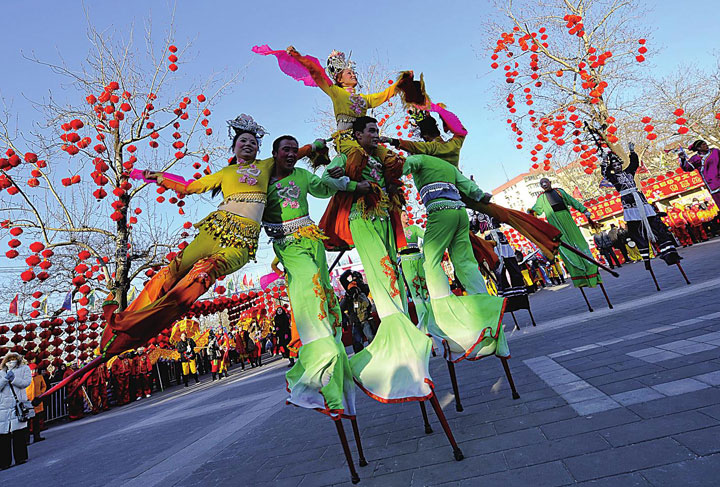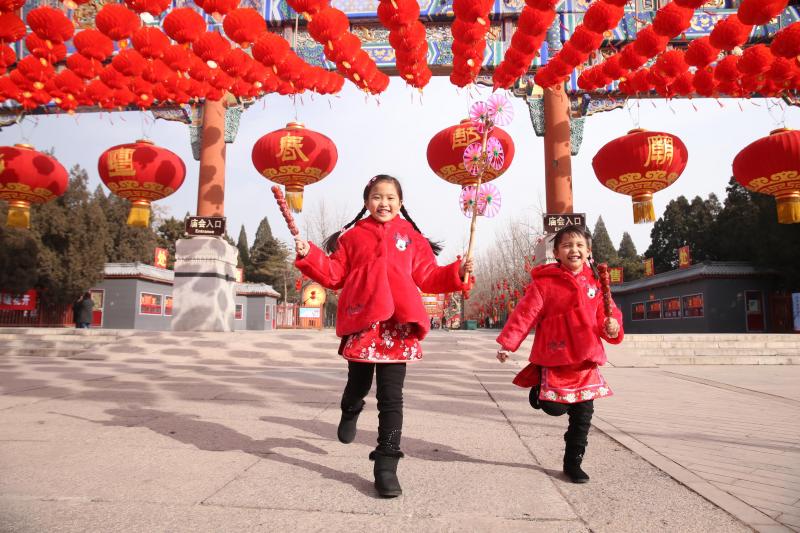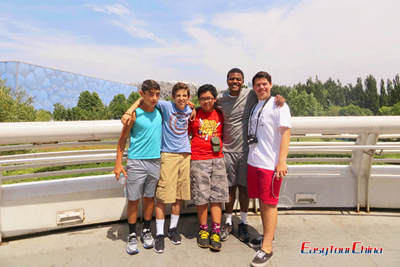Beijing Temple Fair during Spring Festival
Also known as “temple market” or “festival ground”, a temple fair once referred to a cultural gathering traditionally adjacent to temples, where the people can accomplish their worshipping deities, watch entertaining performances and do some shopping. The custom of temple fairs was closely related to the religious activities of Buddhist or Taoist temples.
Nowadays those temple fairs held mainly during the period of Chinese Lunar New Year (Spring Festival) are the most popular and influential ones. Many of them don’t have the religious attributes anymore. In 1984, the temple fairs that had been suspended for nearly 20 years began to resume. With the improvement of living standards, nowadays most people attend the temple fairs no longer just for worshipping the Buddha or Gods, but for trying all kinds of snacks, watching performances, having a family gathering or meeting friends. It is an interesting and enjoyable activity during the 15 days celebration of Chinese New Year.
History of Temple fairs
Buddhism began to be introduced into China during the Eastern Han Dynasty (25-220 AD). At the same time, Taoism also gradually came into being in this period. They competed fiercely for the survival, and both gained a firm foothold in Chinese society during the Southern and Northern Dynasties (420-589AD). In the Tang Dynasty (618-907) and Song Dynasty (960-1279), they all reached their heyday. At the beginning, the focus of the competition between Buddhism and Taoism was the construction of temples and Taoist temples. Then they shifted to win over disciples and followers. For this reason, some new activities such as dance, drama, food/handcraft sales, etc. have been added to accompany with the religious ceremonies. In this way, more average people were willing to join and have fun. This is the origin of the temple fairs.
Temple fairs Activities:
If you want to see something fun and original of Beijing during the Spring Festival, please go and see the local temple fairs. Right here you will not only see ancient Chinese toys like diabolo, pinwheel, try the local snacks like sugar-coated haws, fermented bean drinks, sticky rice cake, etc, but feast your eyes with the traditional Chinese dances, music, and other activities like Yangge dance, lion dance, stilt waling, land boat, and many other interesting performances like Peking opera, martial arts, acrobatics, etc.

In certain temple fairs, there are some unique folk activities. For example, below the arc-shaped stone sculpture in the Baiyun Taoist Temple, there is a stone monkey relief. The people think that touching the stone monkey can relieve illness and prolong life, so they rush to touch it for the good luck. At the Wofeng Bridge of the Taoist temple. There is a big copper coin of traditional Chinese style (a round coin with a square hole in the middle) hanging in the arch of the bridge. A small bronze bell is built in the square hole of the big coin. If you can throw a coin to hit the bronze bell, then your dream will come true. These two are the most popular activities of the Baiyun Taoist Temple Fair.
During the temple fair, visitors will also have a chance to visit flower fair, Beijing folklore paintings exhibition, traditional shop sign flags exhibition, old Beijing photo exhibition, handicrafts exhibition, and discount book fair. Different temple fairs may have different and varied contents.
Most famous temple fairs in Beijing
The most famous temple fairs in Beijing are Changdian Temple Fair, Ditan Temple Fair, Baiyun (White Cloud) Taoist Temple Fair, and Longtanhu Temple Fair.
Being hosted at Liulichang Street, Changdian Temple Fair is the biggest and most famous one in Beijing. It was named as one of the top 4 temple fairs in China (other 3 are Confucius Temple Fair of Nanjing, City God Temple Fair of Shanghai and Qingyang Taoist Temple Fair of Chengdu). It will not be set up until the New Year’s Eve.
As one of the earliest Beijing temple fairs resumed in 1985, the Ditan Temple Fair is well-known for its authentic folk customs and traditions, with highlights of imitating Qing Dynasty' sacrificial ceremony as a traditional program and a myriad of food stalls providing various inexpensive but delicious food. The temple fair attracts more than one million visitors annually;

White Cloud (Baiyun) Taoist Temple Fair is very unique, featuring with many traditional religious activities like "meeting the immortals", "throwing coins to hit the bell in the center of a big hanging coin" and "Touching the stone monkeys to keep diseases and bad luck away".
Located by Longtan Lake, Longtanhu Temple Fair is a kind of new temple fair with a short history of 35+ years. It has nothing to do with the religious purpose. Besides those traditional activities, there is a folk sport games held in the park, the hotshots from all over the country gather here to demonstrate their feats. Visitors may also join in for fun, such as arm-wrestling, rock climbing and chess playing.Also known as “miaohui”, “temple market” or “festival ground”, a temple fair once referred to a cultural gathering traditionally adjacent to temples, where the people can accomplish their worshipping deities, watch entertaining performances and do some shopping. The custom of temple fairs was closely related to the religious activities of Buddhist or Taoist temples.



